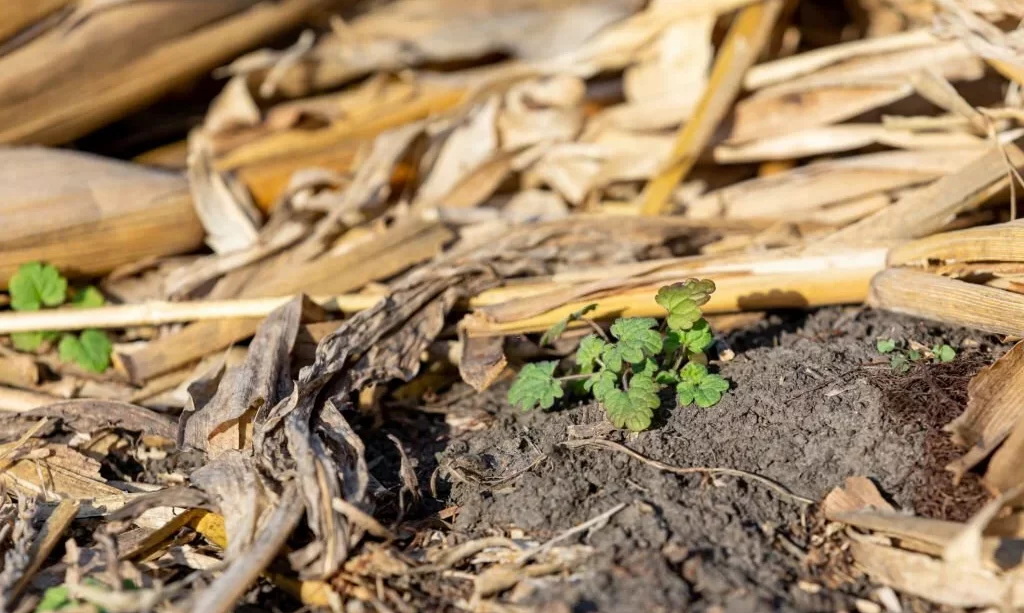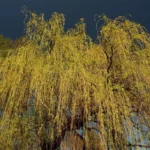As gardeners, we are all too familiar with the relentless presence of weeds in our carefully cultivated landscapes. Yet, as winter approaches, an intriguing question often emerges: Do weeds die in winter? Weeds, notorious for their resilience and adaptability, have a reputation for defying the seasons. In this article, we delve into the world of garden weeds and explore the fate of these persistent plants during the winter months. Understanding the life cycle and survival strategies of weeds is essential for gardeners seeking to maintain weed-free gardens year-round.
- Ortho GroundClear Weed & Grass Killer Refill kills all types of weeds and grasses – visible results in 15 minutes
- OMRI Listed – For organic use
- Apply directly to weeds on walkways, driveways, in landscape beds, and around vegetable gardens
- Use this grass and weed killer any time of the year when weeds are small (3 inches tall or wide) and actively growing
- This 1 gal. container of Ortho GroundClear Weed & Grass Killer is ready to use with the included Comfort Wand
The Life Cycle of Weeds
Weeds, like other plants, have diverse life cycles that impact their ability to thrive and reproduce. Understanding these life cycles is crucial for comprehending the fate of weeds in winter. There are three primary categories of weed life cycles:
- Annual Weeds: Annual weeds complete their life cycle within a single year. They germinate, grow, flower, produce seeds, and die in the same growing season. Many annual weeds, such as common purslane and lamb’s quarters, rely on prolific seed production to ensure their survival from one year to the next.
- Biennial Weeds: Biennial weeds have a two-year life cycle. In their first year, they typically grow as rosettes of leaves. During the second year, they bolt, produce flowers and seeds, and then die. Examples of biennial weeds include common mullein and garlic mustard.
- Perennial Weeds: Perennial weeds are the most long-lived among weed species. They can survive for several years, sending up new growth from underground structures like rhizomes or taproots. Perennial weeds, including dandelions and bindweed, persist through various environmental challenges.
Each of these life cycles interacts with the seasons, affecting how weeds behave in winter. Annual weeds, for instance, may die off entirely after producing seeds in the fall. Biennial weeds often overwinter as rosettes before flowering the following spring. Perennial weeds, with their below-ground survival structures, can endure winter conditions and emerge vigorously when spring arrives. The life cycle of a weed plays a critical role in determining its fate during the cold season.
Winter Dormancy of Weeds
Winter dormancy is a crucial concept in understanding the survival strategies of weed species during the colder months. While some weeds, particularly those with annual life cycles, complete their life cycle by producing seeds and then die, others adopt a dormant state to withstand the challenges of winter. Winter dormancy is a survival mechanism that allows weeds to conserve energy and endure adverse conditions.
Weeds that enter winter dormancy often reduce their growth, both above and below the soil. The reduction in metabolic activity helps them withstand cold temperatures and limited light. In this dormant state, many weed species might appear as if they have died, with foliage wilting and above-ground growth stunted. However, below the soil’s surface, these plants remain viable, ready to resurge when more favorable conditions return with spring.
Weed Control in Winter
Weed control is a year-round endeavor for gardeners who seek to maintain weed-free landscapes. Although the growth of weeds may slow during winter, it’s an opportune time to take proactive measures to prevent weed infestations in the upcoming spring. Here are some strategies for managing weeds in winter:
- Mulching: Applying a layer of organic mulch to garden beds helps suppress weed growth by blocking light and insulating the soil from temperature extremes.
- Hand Pulling: During winter, it’s easier to identify and remove weeds, particularly annuals and biennials, as they may still be visible and easier to pull out before they produce seeds.
- Pre-emergent Herbicides: Some gardeners opt to use pre-emergent herbicides in late winter to prevent weed seeds from germinating in the spring. These herbicides create a barrier in the soil, inhibiting weed seedlings from emerging.
- Monitoring and Planning: Taking time during the winter months to survey the garden for weeds, plan planting schedules, and implement weed prevention strategies can save considerable effort in the growing season.
By engaging in proactive weed control during the winter, gardeners can significantly reduce the weed pressure when spring arrives. Understanding the life cycles and dormancy of different weed species is invaluable for implementing effective strategies for managing these persistent plants year-round.
The Fate of Different Weed Species
The fate of weed species during winter can vary significantly, depending on their life cycles and survival strategies. Some common weed species exhibit diverse behaviors:
- Annual Weeds: Many annual weeds, like chickweed and pigweed, often complete their life cycle by producing seeds and dying in the fall. However, some seeds may overwinter in the soil, ready to germinate in the spring.
- Biennial Weeds: Biennial weeds, such as wild carrot and common teasel, typically enter winter as rosettes. They conserve energy and resources to prepare for flowering in the following growing season.
- Perennial Weeds: Perennial weeds, like dandelions and bindweed, are particularly adept at surviving winter. Their underground structures, including taproots and rhizomes, provide protection from freezing temperatures, allowing them to resurge in the spring.
The diversity of weed species and their varying responses to winter conditions make weed management a multifaceted challenge for gardeners. Recognizing the specific behaviors of different weed types is vital for effective control measures and the preservation of well-tended gardens.
Conclusion
The question of whether weeds die in winter unveils the intricate dance between gardeners and these persistent plants. Weeds, with their diverse life cycles and survival strategies, challenge gardeners to adopt proactive measures for control and prevention, even during the colder months. While some weeds complete their life cycles and die in the fall, others enter winter dormancy, and perennials bide their time below the surface.
Understanding the life cycles, dormancy, and specific behaviors of different weed species is essential for year-round weed management. The diligent gardener takes advantage of the winter season to prepare for the challenges of spring, employing strategies like mulching, hand pulling, and pre-emergent herbicides. By doing so, gardeners can nurture their landscapes and keep weeds at bay, ensuring that the growing season brings forth the vibrant and healthy gardens they envision.





